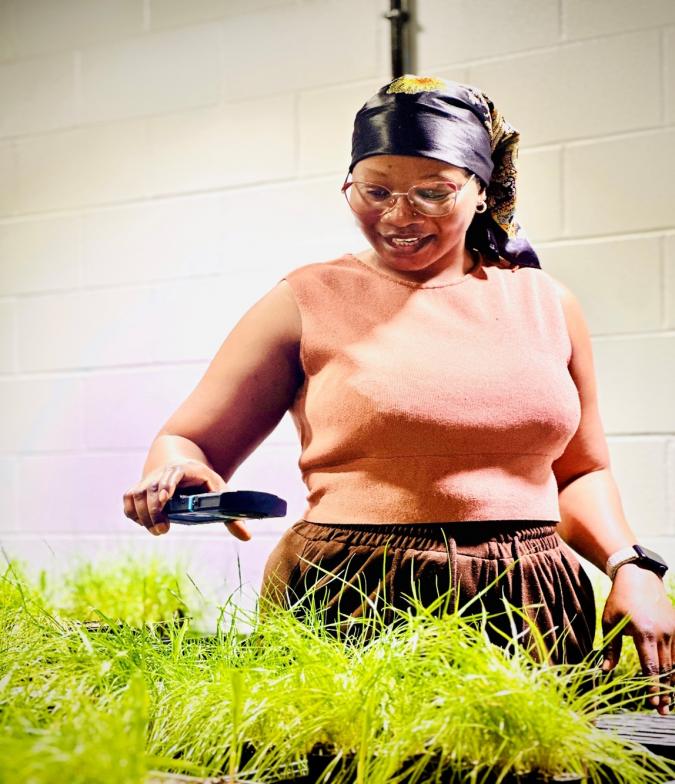Ames, Iowa, USA
May 5, 2025
In the glow of the Seed Science Center’s growth chambers, graduate student Amina Moro is hard at work uncovering how corn responds to one of its earliest stress signals—shade.
Moro, an international student from Ghana and a graduate assistant to Professor Susana Goggi, is investigating the Shade Avoidance Response (SAR) in corn. This phenomenon, triggered when corn perceives competition from nearby plants, causes the crop to adjust its growth—often in counterproductive ways.

“When corn senses that it's being shaded by nearby vegetation, it reacts quickly,” said Moro. “It starts reallocating energy to grow taller or change its leaf angles in an effort to capture more light. But that comes at a cost—less energy goes into producing strong roots or healthy grain.”
Her research focuses on how SAR is triggered when corn is grown in proximity to perennial grasses, specifically rye. These interactions are particularly relevant as farmers increasingly adopt cover cropping systems for soil health, which often include species like rye.

“In our study, we’re trying to pinpoint the exact distance at which corn begins to detect the presence of rye and initiates the shade avoidance response,” explained Moro. “We planted the corn and rye in separate containers and placed them at different distances from one another to isolate above-ground competition.”
By using controlled lighting and a strategic container setup, Moro can monitor changes in red to far-red light ratios—the signal plants use to detect nearby competitors. This enables her to identify not only when SAR is triggered but which parts of the corn plant respond first.

“We’re looking at how the plant reallocates its resources—whether it prioritizes stem elongation, leaf development, or other changes,” she said. “Ultimately, we hope this data helps farmers and researchers better understand how to manage competition in early corn development without sacrificing yield.”
As Moro continues her work, she’s optimistic about how these findings could inform smarter planting strategies in diversified cropping systems.
“Coming from Ghana, where smallholder farmers often grow multiple crops together, I understand how important it is to make intercropping work,” she said. “I’m excited to contribute research that could help make these systems more productive and sustainable.”